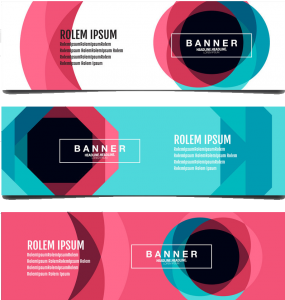So, you’ve got a website—but did you know it can actually make you money? Yep, your site doesn’t just have to sit there looking pretty. With the right steps, it can turn into a little business of its own. That’s what people mean when they talk about how to monetize a website.
Monetizing basically means finding smart ways to earn from the visitors who come to your site. Some websites make money by showing ads, some by selling stuff, others by teaming up with brands or offering special content. The cool thing is, there isn’t just one way to do it—you’ve got plenty of options to pick from depending on what your site is about and who visits it.
Whether you’re dreaming of building a full-on online business or just want a little extra pocket money, learning how to monetize a website is your ticket to making that happen. In this guide, we’ll break down 10 tried-and-true strategies so you can choose the ones that fit your goals best.
Table of Contents
ToggleStrategies To Pick From To Monetize Your Website

#1. HOST WEBINARS
One of the smartest ways to figure out how to monetize a website is by hosting webinars. Think of a webinar as an online class where you share your knowledge with people who are eager to learn. You can run it live (like a virtual classroom where you chat in real time) or pre-record it so people can watch anytime they want. Both options can bring in money while also making you look like an expert in your field.
The beauty of webinars is that they don’t need a huge budget to get started. All you really need is a topic your audience cares about and a tool like Zoom or Vimeo to host it. From there, you can add a simple sign-up form on your site so people can register and pay. Easy, right?
Here’s where it gets even better: once you record a webinar, it doesn’t just earn you money one time—you can sell that recording over and over again. That means you’ve built a steady income stream with just one solid piece of content.
If you’re serious about how to monetize a website, webinars are a great first step. They let you teach, connect with your audience, and make money all at once.
#2. DISPLAY GOOGLE ADSENSE ADS
If you’ve been wondering how to monetize a website without doing too much heavy lifting, running ads is probably the easiest way to start. And when it comes to ads, Google AdSense is the big player everyone trusts.
Here’s the simple idea: you allow Google to place ads on your site—these could be banners, boxes, or little text ads. Each time someone clicks on one, you earn money. That’s called pay-per-click (PPC). So, the more people visit your site and click ads, the more cash you can make.
The cool thing about AdSense is that it’s beginner-friendly. Once you sign up and connect it to your website, Google does most of the work. You just need to place the ads where your visitors can see them—like in the middle of your blog posts or along the sidebar.
Google even gives you a neat calculator to check how much you could earn based on your site traffic. And guess what? Publishers keep 68% of the ad revenue! That means if an advertiser pays $1 for a click, you get $0.68. It may not sound like much at first, but with steady traffic, it adds up fast.
One important tip: focus on writing great content so more people visit your site. The higher your traffic, the bigger your AdSense earnings. And always follow Google’s rules to keep your account safe and active.
So if you’re just getting started and looking for a simple step in how to monetize a website, AdSense is a great beginner-friendly option that pays you for doing what you already love—creating content.
#3. BECOME AN AFFILIATE MARKETER

Another smart way to figure out how to monetize a website is through affiliate marketing. Think of it like being a middleman—you recommend someone else’s product, and if people buy it through your special link, you get a slice of the profit.
Here’s how it works in simple terms: let’s say you’re part of an affiliate program that gives you 10% commission. If a visitor clicks your link and buys a $100 product, you just earned $10. Now imagine hundreds of people clicking and buying—that’s where the magic happens. Those small amounts can stack up into real money over time.
Getting started is actually pretty easy. First, sign up for affiliate programs like Amazon Associates, ShareASale, or other popular networks. They’ll give you unique links for products you want to recommend. Then, weave those links into your content—like in blog posts, reviews, tutorials, or even a “top 10 favorites” list.
The trick is to keep it natural. Don’t just throw links everywhere—make them useful and helpful for your readers. For example, if you write a guide about the best cameras for beginners, you can add affiliate links to the exact cameras you recommend.
To take things to the next level, keep an eye on which links are getting the most clicks and sales. Tools like Google Analytics or affiliate dashboards will show you what’s working and what’s not. That way, you can double down on the strategies that bring in the most money.
And here’s the best part: affiliate marketing pairs really well with SEO. The more people find your site through search engines, the more clicks your links get, and the higher your earnings climb.
So if you’re still exploring how to monetize a website, affiliate marketing is one of the most flexible, low-risk, and beginner-friendly methods out there. You don’t need your own product—just a little creativity, honesty, and consistent effort to build steady income.
#4. SELL AD SPACE
Another clever way to learn how to monetize a website is by selling ad space directly to companies. Instead of relying on platforms like Google AdSense (where they take a big cut), you get to keep most of the money because you’re dealing straight with the advertiser. That means more cash in your pocket.
This method works best if your site already has a clear niche and a steady audience. Why? Because advertisers love knowing exactly who they’re reaching. For example, if your website is all about healthy eating, a brand that sells protein shakes or kitchen tools might pay you well just to show up on your site.
The cool part is, you get to decide what type of ads you want to offer. It could be banners at the top of your page, sidebar ads, or even sponsored posts that blend into your content. And here’s the fun bit—the more visitors you get, the more you can charge. A busy site can easily make hundreds or even thousands of dollars a month just from ad placements.
So, how do you get started? First, create a media kit—it’s basically a brochure that shows off your site stats (like monthly visitors, audience demographics, and engagement levels). This gives potential advertisers a clear picture of your site’s value. Then, set fair pricing for the spaces you’re offering—smaller banner spots might be cheaper, while prime real estate like the top of your homepage can cost more.
Don’t forget to keep things authentic. Partner with advertisers that make sense for your niche so your audience continues to trust your recommendations. Use tools like Google Analytics to prove your numbers and show advertisers why your site is worth the investment.
And here’s a pro tip: you don’t have to stick with cookie-cutter packages. You can offer custom sponsorships that combine banners, shoutouts, and special mentions. That’s how you attract higher-paying brands who want something unique.
If you’re serious about figuring out how to monetize a website, selling ad space is one of the most direct and rewarding paths. It gives you control, builds long-term partnerships, and can turn your traffic into a steady flow of income.
#5. ACCEPT DONATIONS
One of the easiest ways to figure out how to monetize a website is by simply asking your audience for support. If people love the free content, tips, or services you share, many of them will be more than happy to chip in a little money to help you keep things running.
Think of it like this: when someone enjoys your work, a donation is their way of saying, “Thanks, please keep it up!” It doesn’t have to be huge—even small amounts add up when enough people join in. Some websites do this with monthly donation options, while others just give visitors the chance to make a one-time contribution.
Getting started is super simple. You can add a PayPal donation button or connect your site with other payment tools that allow visitors to send money directly. You can even make a QR code that links straight to your donation page—so someone can just scan it and donate in seconds.
Here’s a pro tip: make your donation goals clear. For example, let your audience know that contributions help pay for hosting fees, creating new content, or improving your site. When people see exactly how their support helps, they’re more likely to pitch in.
And if you want to go the extra mile, you can offer small perks to donors—like exclusive content, early access to updates, or even a public thank-you shoutout on your site. Those little touches make people feel valued and part of your journey.
At the end of the day, to monetize a website doesn’t always have to be complicated. Sometimes, it’s as simple as giving your fans and followers an easy way to say “thank you” with a donation. Just make sure your site is safe and secure, so they feel comfortable supporting you.
#6. SELL YOUR OWN PRODUCTS AND SERVICES

One of the smartest ways to monetize a website is by selling your own products or services. It’s simple — if people already love your content, they’ll likely be interested in what you offer too.
You can sell almost anything — from physical items like handmade crafts or branded merch to digital products like ebooks, online courses, templates, or even software. The beauty of digital products is that you create them once and keep selling them forever — no extra production cost every time someone buys!
If your website runs on WordPress, you can easily turn it into an online store using WooCommerce. It’s a free plugin that lets you set up your shop, list products, manage payments, and track inventory — all from your dashboard.
Or, if you prefer something even easier, you can use a drag-and-drop builder like Hostinger Website Builder. It has built-in ecommerce tools, so you can upload products, set prices, accept payments, and manage orders in just a few clicks. Plus, it supports over 20 payment methods, so customers anywhere in the world can buy from you.
Here’s how to make your online store shine:
#1. Stick to a niche. Focus on a specific group of people who truly need what you sell.
#2. Keep payments safe and simple. Use trusted gateways your audience already knows.
#3. Add irresistible offers. Discounts, free shipping, and limited-time deals always catch attention.
#4. Make your website mobile-friendly. Most people shop on their phones, so your store should look good everywhere.
#5. Show off your products. Use high-quality photos, clean designs, and clear descriptions.
#6. And if you’re selling digital products, offer a free sample — like the first chapter of your ebook or a preview video of your course. It helps people see the value before they buy.
Selling your own products or services isn’t just a great way to monetize a website, it’s how you build a real online business — one that can grow while you sleep.
#7. FLIP WEBSITES FOR PROFIT
Here’s another smart and exciting way to monetize a website — by flipping it! Website flipping is just like fixing up an old house and selling it for more money, except this time, you’re doing it with websites.
The idea is simple: you buy a website that’s not performing well, make it better, and then sell it for a higher price. The better your improvements, the more money you can make. Some people do this as a full-time business and earn thousands of dollars from each flip.
Here’s how it works:
#1. Find a website with potential. Look for sites that have good content or a great niche but need a little help — maybe the design is outdated or the SEO is weak.
#2. Buy and improve it. Refresh the look, fix broken links, improve the writing, and make sure it’s easy to navigate. Add new content, optimize for search engines, and make it user-friendly.
#3. Boost its traffic and revenue. The more visitors and earnings it has, the higher its resale value.
#4. Sell it for a profit. Once the site is performing well, list it on marketplaces like Flippa or Empire Flippers and wait for the right buyer.
#5. Each flip helps you learn something new about how to monetize a website better. And the best part? You can reinvest your profit into buying and improving the next one — turning a simple idea into a growing online business.
With time, skill, and a bit of patience, flipping websites can become one of the most rewarding ways to make money online.
#8. PUBLISH SPONSORED CONTENT AND REVIEWS
One of the easiest and most reliable ways to monetize a website is by publishing sponsored content and product reviews. This simply means working with brands or companies that want you to talk about their products or services on your site — and paying you to do it.
It’s a win-win situation: they get exposure to your audience, and you earn money for sharing useful information. You could write an article, a blog post, or even make a video about their product. The better your website’s traffic and reputation, the more brands will want to work with you — and the higher you can charge.
To make this work, your readers have to trust you. Always be honest about what’s sponsored, and only work with brands that fit your website’s theme. For example, if your website focuses on healthy living, don’t promote junk food. Keep it real — that’s how you keep your audience loyal.
When creating sponsored content:
#1. Use great pictures or short videos that show the product in action.
#2. Write naturally so it doesn’t sound like an ad.
#3. Negotiate clearly with the brand so everyone understands the terms.
#4. Keep your regular, non-sponsored content going so your site feels balanced.
Publishing sponsored content is one of the smartest ways to monetize a website without creating new products or handling sales. As your website grows, so will your opportunities — and before long, brands will be the ones reaching out to you.
#9. CREATE MEMBERSHIP WEBSITES
Another awesome way to monetize a website is by creating a membership area where people pay to access premium content or special services. Think of it like having a VIP section for your most loyal readers or fans — those who want extra value and are happy to pay a small fee for it.
You can offer all sorts of exclusive perks — like in-depth articles, behind-the-scenes videos, helpful tutorials, or even a private community where members can chat and share ideas. To make things even more exciting, you can create different membership levels — for example, “Basic,” “Premium,” and “Pro” — each with its own benefits and price.
A great trick to attract new members is to give them a free trial or a “freemium” option, where they get a taste of what they’d enjoy as full members. Once they see how useful your content is, they’ll likely subscribe!
Here are a few ways to make your membership site successful:
#1. Keep adding fresh, valuable content so members feel their money is well spent.
#2. Create a friendly community where people can share and connect.
#3. Use automation tools to manage sign-ups, payments, and access easily.
#4. Make the registration process quick and simple — nobody likes long forms.
Protect your members’ information with solid security.
Building a membership site is a fantastic long-term way to monetize a website because it gives you steady, recurring income while keeping your audience engaged and loyal.
#10. CREATE ONLINE COURSES

One of the smartest and most rewarding ways to monetize a website is by creating and selling your own online courses. If you’re good at something — whether it’s baking, photography, coding, or even digital marketing — there are people out there who’d love to learn from you. And the best part? Once you create your course, it can keep earning money for you even while you sleep!
People are always searching for ways to learn new skills or improve in their careers. So, the goal is to design an online course that matches what you already know and what others are eager to learn. You can teach step-by-step lessons, share tips, or even walk students through real-life projects.
To make your course effective, organize it into short, easy-to-follow lessons. This keeps students interested and helps them learn faster. Add quizzes or simple tests at the end of each section to help them measure their progress — and reward them with certificates when they complete the course.
Here are some tips to make your course shine:
#1. Break your content into modules so it’s easy to follow.
#2. Keep each lesson short, clear, and engaging.
#3. Add videos, visuals, and examples to make learning fun.
#4. Update your content regularly to stay current with new trends.
Offer a free preview lesson so people can see what they’ll get before they buy.
Creating online courses isn’t just about sharing knowledge — it’s about building trust and growing your brand while earning consistent income. It’s one of the most effective ways to monetize a website and turn your skills into a profitable business.
Conclusion
Learning how to monetize a website isn’t just about making a few bucks — it’s about unlocking the full potential of something you’ve already built. Whether your site shares knowledge, sells products, promotes brands, or builds a community, each visitor represents an opportunity to earn while providing value.
From hosting webinars to creating online courses, displaying ads, or selling your own products, there’s no one-size-fits-all approach. The secret lies in choosing the strategies that best match your content, audience, and goals — and then being consistent with them. Even small efforts, when done right, can grow into steady, long-term income.
The internet rewards creativity and persistence. So, take that first step today — start applying what you’ve learned about how to monetize a website, experiment with different methods, and watch your passion turn into profit. Your website isn’t just a platform; it’s your digital business card, your stage, and your ticket to financial freedom.








